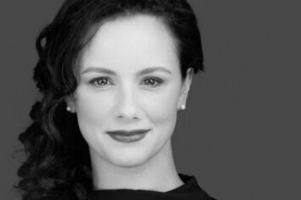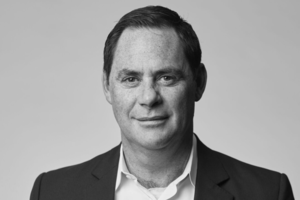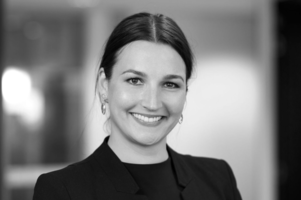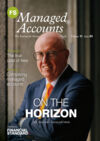European summer of equitiesBY ANNABELLE MILLER | FRIDAY, 11 JUL 2025 11:59AMWhile uncertainty reigns over the outlook for the US, the outlook for Europe - which has become an unexpected beneficiary of US market turmoil - is bright. The tariffs introduced by US President Donald Trump on "Liberation Day" were the catalyst for global capital allocators to reassess their positioning after a long-period of US denominated assets outperforming. Uncertainty around the impact of tariffs on global economic growth - and the fine print in the US budget reconciliation bill, such as Section 899 - continues to plague investors who are now turning their attention to other markets, most especially Europe. Europe has long remained at a steep discount to the US, driven largely by the return on equity differentials, and the generally lower profitability and more onerous regulatory regime that exists in European countries. Other factors such as currency and economic conditions have also contributed to the underperformance of Europe in recent times. But the tide is turning. There are a number of structural drivers that are reigniting growth in the European market and capturing the attention of global allocators. The five structural drivers for growth The first is the European Commission's push for a Savings and Investment Union in Europe, partly aimed at incentivising household savings into equity investment. The goal would be for 13 to 18 per cent of available household income in savings to be allocated to equity investments. This would be a positive for flows into domestic European equities and would improve access to capital to assist in higher domestic investment and growth. The second driver is the increase in defence spending across a majority of European countries. This has mainly been sparked by the Ukrainian-Russian conflict, but also by US President Donald Trump signalling he expects NATO and Europe to take more responsibility for its own security. More recently, the US has been in talks with its European allies about a plan to withdraw US troops from Europe by year end. Defence spending typically boosts economies, as it creates new jobs and opportunities for innovation and investment. In fact, Germany has not only increased its defence budget, but is also investing in its infrastructure, Which is another significant structural driver for Europe. Earlier in the year, German lawmakers voted to allow a large increase in defence and infrastructure spending. The law will exempt spending on defence and security from Germany's strict debt rules, meaning unlimited defence spending, as well as the creation of a €500 billion infrastructure fund. Germany's investment into its infrastructure will also be a positive for European markets, as it will create a wide range of opportunities for companies and investors to capitalise on. The fourth driver is the European Commission's finalised reform of the European Long-Term Investment Funds (ELTIFs) rules. ELTIFs are EU funds that allow investors to invest in real assets, companies and long-term projects. These capital market reforms mean investors can access an expanded universe, broadening the range of eligible assets for ELTIFs to include infrastructure, SMEs, listed and unlisted companies. The reforms have also improved liquidity options and simplified marketing and distribution, by creating an EU-wide passportability of ELTIFs. These reforms will ease the competition rules and fragmentation of European capital markets. The fifth driver is the potential resolution to the Russian-Ukraine conflict. A resolution would see a significant improvement across many European economies, an increase in investor confidence, lower energy prices, increased GDP growth and a boost for cyclical sectors. One final driver that is yet unclear is the net outcome of Section 899 of the US budget reconciliation bill. If passed, this will impose taxes on passive income derived from the foreign ownership of US assets on countries that have levied foreign taxes on the US. This could lead to domestic European capital investors shifting away from owning US equities in favour of their domestic counterparts. Opportunities abound Rather than make active investment decisions based on country or sector outlooks, we adopt a bottom-up asset selection approach, and are finding great opportunities to increase our allocation to global franchises irrespective of geography. Recent additions include Ferrari (listed on Euronext Milan) and Sartorius Stedim Biotech (listed on the Frankfurt Stock Exchange). Sartorius Stedim Biotech for example, continues to recover following a deep cyclical trough in the bioprocessing market following COVID-19 The business will benefit from the wave drugs coming to market based on biological manufacturing processes including biosimilars and cell and gene therapies. Following COVID-19, the business bolstered its manufacturing supply chain and is relatively well insulated from the proposed US tariffs given it has manufacturing facilities in both Puerto Rico and the US, which meets a large portion of demand from US companies. Another example of a prospering company is Atoss Software (listed on the Frankfurt Stock Exchange), a leading provider of mission critical workforce management software in the DACH-region of Europe. It has recently invested in expanding its salesforce to conquer the remainder of continental Europe. The business benefits from its close relationship with private equity firm, General Atlantic. Atoss Software is leveraging General Atlantic's expertise and networks to establish relationships with large enterprises across Europe. The recently announced German €500 billion infrastructure fund should benefit Atoss Software's current and prospective customer base. Will Europe once again prosper? Although there are promising structural drivers in Europe, there are still headwinds. The escalation of the US-EU tariff situation into - or following - the 90-day pause, the ongoing Russian-Ukraine conflict, and/or a lack of progress on fiscal stimulus and the reforms mentioned above, can all dampen the prospects of a rotation in the European market. In this environment, a bottom-up approach becomes all important. It assists in finding high quality growing businesses with strong current performance metrics but that also possess the qualitative attributes necessary for sustainable success, especially during times of global uncertainty. |
Latest News
UniSuper delivers 10.3% to members
|TelstraSuper Balanced option makes 9.3%
|Brighter Super default members earn 11% in FY25
Mercer SmartPath returns exceed 12%
Cover Story

Climbing to the top
MANAGING DIRECTOR
VANGUARD INVESTMENTS AUSTRALIA LTD






















